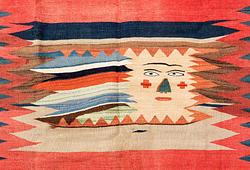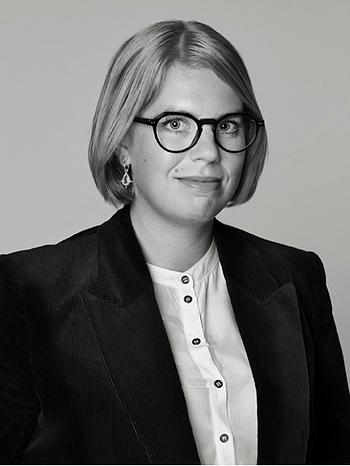Gösta Adrian-Nilsson
"Kl. 1/2 12".
Signed G.A-N. Probably executed in Stockholm in 1919. Paper-panel 62 x 37 cm.
Alkuperä - Provenienssi
Earlier in the collections of Engineer Egon Östlund, Halmstad and Borås, Sweden.
Private Collection.
Bukowski Auktioner AB, Stockholm, auction 537, "Moderna höstauktionen", 1 November 2005, cat. no 110 (under the title "Sjömän i hamn").
Private collection.
Näyttelyt
Prins Eugens Waldemarsudde, Stockholm, "GAN -modernistpionjär och outsider", 19 February - 29 May 2011, cat. no 41.
Kirjallisuus
"Konst i svenska hem", vol. 3, catalogued p. 140 under collection 165: "Förste Maskiningeniör Egon Östlund, Norra Vägen 4, Halmstad".
Muut tiedot
"I have called my exhibition 'sailor compositions'. The 'subject' of my paintings - not a subject in impressionism or expressionism or even in any other sense of isms - is the 'sailor', his life, his world. I have tried to 'realise the essence of the sailor': the variegated adventures, the straight, grey discipline, the dark blue will and the fiery passion".
The above words were written by Gösta Adrian-Nilsson in the preface to the catalogue produced in conjunction with his groundbreaking solo exhibition at Gummeson's Konsthall in Stockholm in January 1918. Already in September 1916, Gösta Adrian-Nilsson, or GAN, had made his debut with an exhibition at Gummeson when he moved from Lund to Stockholm.
The big city with all its, above all modern, elements was a welcome break from the small-town life in Lund. Significantly inspired, GAN produced several cityscapes from Stockholm between 1916 and 1919, in which sailors are like ornamental figures in the paintings, often at the centre of the composition.
Jan Torsten Ahlstrand notes that GAN executed “several Stockholm motifs, which want to express the dynamic nature of the city" before continuing " that the city with its anonymity also attracted in other ways is clear from GAN's diaries. In Stockholm, there were the sailors, the flotilla, who exerted an irresistible attraction on GAN, both erotically and artistically. 1917 was an exceptionally productive year, when his sailor paintings burst into full bloom with an impressive series of paintings shown at the exhibition 'Sjömanskompositioner' at Gummesons in January 1918 (Jan Torsten Ahlstrand & Viveka Bosson, "GAN. Gösta Adrian-Nilsson. The period 1914-1932", 2002).
Several of the paintings exhibited at Gummesons in 1918 have come to be recognized as some of the artist's absolute masterpieces, such as 'Katarinahissen III' and 'Roddexercis'. Even though GAN focused on sailors as motifs for most of his career, after moving to Paris in 1920 not infrequently in the form of French sailors, it is, however, mainly during the 1910s that these motifs position GAN as the "modernist pioneer from Lund" (as J. T. Ahlstrand subtitled it in his 1985 monograph).’’
One of the reasons for GAN's fondness for sailor motifs during this period is the artist's infatuation with the young naval officer Edvin Andersson, which has already been pointed out in the history of the artist. GAN's obsession with 'the blues', i.e. sailors, is certainly palpable, and GAN himself writes in his diaries that it is his erotic experiences that inspire his many sailor paintings. More than just an artistic expression of romantic longing, however, GAN's motifs can be seen from another perspective, which is also well described by Ahlstrand: "The sailors, the sailors, with their geometrically cut uniforms also represented the modern age. With his romantic orientation, GAN also saw these 'knights of the sea' as symbols of adventure and of his own longing for distant exotic lands". Fittingly, one of GAN's favourite authors was Jack London, whose many tales of adventure at sea were often and gladly read by GAN. In the autumn of 1919, GAN also moved temporarily to the port city of Gothenburg, driven by a desire to stow away on a boat to South America or the South Sea - away from European civilisation.
Egon Östlund
GAN writes about Egon Östlund; "Egon was the first Halmstad group member - so the number is 7 and not 6. Egon became my true friend. What significance it had for me during the years of scolding and starvation in Stockholm to have a person who blindly believed in me, who accepted, cannot be overestimated. Not to mention my summer visits to him (when he had become a mechanical engineer in Halmstad), the fresh, bright summer town, the plentiful meals, the baths at Östra stranden, Halmstad (and later in Eketånga), the walks along the Nissan, and the incomprehensible atmosphere that hangs over Halmstad, the air the 'painter's boys' have breathed and which would eventually oxygenate their work, just as this air has oxygenated my own." (Kulturens Arkiv, Lund).
The above description, taken from GAN's autobiographical notes from 1947, provides a clear description of Egon Östlund's importance to GAN. Already in the autumn of 1914 Östlund became acquainted in Motala with Gösta Adrian-Nilsson, who was five years older. A condensed biography of Östlund was compiled by Ahlstrand in connection with Bukowski's Modern Autumn Auction in 2013, which is reproduced below (a selection): "Östlund was born in Gävle in 1889 and trained as a mechanical engineer in Stockholm. After employment at Gävle-Dala Järnväg and later at Motala Verkstad, he moved with his wife to Halmstad in 1916, where he was employed for thirty years as a mechanical engineer at Halmstad-Nässjö Järnvägar (HNJ). It was during his many years in Halmstad that Östlund, who had a strong interest in art, got to know the young Halmstad artists and actively contributed to the formation of the Halmstad Group in 1929. He also became a driving force in the city's artistic life and took the initiative to form the Halland Art Association, where he was secretary and curator from 1932 to 1944 and then chairman of the association from 1945 to 1946. After the nationalisation of HNJ, Östlund was transferred by SJ in 1946 to Borås, where he served as first mechanical engineer until his death in 1952."
The walls of Östlund's home were filled with paintings by GAN, the Halmstad Group, Carlsund and many other artists, many of whom were or had been personal friends. The reference work "Konst i svenska hem" describes Östlund's impressive collection as it appeared when Östlund was living in Halmstad. The list appears to be an impressive number of some of Sweden's foremost modernist artists where GAN is represented by no less than forty works!
The auction's "Kl. ½ 12" is undated but can be stylistically dated to 1918 or 1919. 1919 was an intense year for GAN. Ahlstrand writes: 'During the last year in Stockholm, 1919, GAN came into focus as never before through its participation in three major collection exhibitions at Liljevalchs konsthall'. The first of these exhibitions, the so-called "Februari gruppen", was shown from 15 February to 23 March and contained no less than thirty oil paintings and three watercolours by GAN. The exhibition's catalogue number 344 is interesting in this context. The title of the painting was "Lördagskväll kl.9”, which brings to mind the painting in the auction.GAN relatively often sneaked small rebus-like word puzzles into his motifs in the form of letters or fragments of words. Obviously, this modus operandi could also permeate how the artist named his motifs. "Kl. ½ 12" seems to be the correct title of the painting as it is written on a label on the back in what appears to be Egon Östlund's handwriting. Jan Torsten Ahlstrand has dated "Lördagskväll kl. 9" to September 1918, which may indicate that "Kl. ½ 12" may have been painted as early as autumn 1918. However, the painting was probably executed in the spring of 1919, before GAN left Stockholm in May 1919, but it is also conceivable that it was executed during GAN's summer stay in Halmstad that year.
"Kl. ½ 12" aptly summarises an important development phase in GAN's production during the last years of the 1910s, and the subject is probably the Skeppsbron in Stockholm. The dimly lit evening atmosphere is palpable, with the modern metropolitan environment effectively merging with the sailors who populate the quay, the smoke billowing from the ship's chimney resonating with the smoke rising from the cigarette in one of the sailors' mouths. Thus there is a tangible connection between the modern city and the people who inhabit it. This motif, like so many other of GAN's sailor paintings, is, as Jan Torsten Ahlstrand writes: "in its fusion of an extremely avant-garde imagery with a subcultural content of a 'forbidden' kind, unique in the history of European modernism".



























































